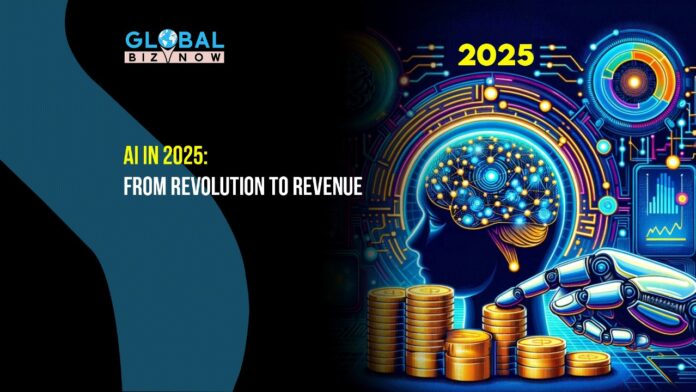2024 sparked the AI Revolution. In 2025, It’s All About Proving Its Worth.
As we step into 2025, the spotlight is shifting from the sheer promise of generational AI to the tangible task of testing its use cases and, most importantly, finding answers to the age-old question: how do we monetize it?
Three key trends are emerging as the front-runners in this AI evolution, setting the stage for what’s next.
1. The Rise of AI Agents: A New Era of Digital Labour
Imagine a world where routine tasks—on boarding clients, approving expenses, or even handling complex customer service requests—are executed with minimal human intervention. That’s the promise of AI agents. OpenAI’s CEO, Sam Altman, calls them “the next giant breakthrough,” and he’s not alone in this belief.
Salesforce, for instance, has already begun deploying its workplace AI agent, Agentforce, with over 200 companies on board. “We’re really at the edge of a revolutionary transformation… This is really the rise of digital labour,” Salesforce CEO Marc Benioff declared in a recent earnings call.
Other tech behemoths are taking note. Anthropic announced its agent in October, Microsoft in November, and OpenAI plans to debut its agent in early 2025. By that point, agentic AI will probably be more than a passing fad; it’ll become a cornerstone of business operations.
2. Monetizing AI: The Perplexity Shopping Revolution
For many, the question is not whether AI will revolutionize industries but how to make it profitable. Step forward Perplexity AI, a conversational “answer engine” backed by tech heavyweights like Jeff Bezos and Nvidia.
In November, Perplexity launched a shopping hub designed to take on Google’s dominance in the search engine space. The idea is simple yet transformative: point your phone at a product, ask the bot where to buy it, and instantly receive answers complete with prices and purchase options.
Need help building a library or planning a party? Perplexity can generate curated shopping lists, complete with reviews and links, all within its app. It even enables users to complete transactions directly, streamlining the experience further.
Perplexity will develop its shopping capabilities with product cards—graphic, expanded descriptions of relevant products by 2025. Given its backer in the form of the founder of Amazon, this platform has a good potential to redefine the AI-driven shopping experience.
3. Elevating AI Interfaces: The Battle for Next-Gen Tools
While foundational models have soared to impressive heights, leaders like OpenAI, Google, Meta, and Anthropic are in a competitive dash to refine their interfaces.
Recently, OpenAI introduced Canvas, a notebook-like tool where users can edit and collaborate on ChatGPT responses in real time. Meanwhile, Google is preparing to release Gemini 2.0, the latest model designed for the “agentic era,” with advanced multimodal capabilities for image and audio output.
These trends are part of a larger problem: as the low-hanging fruit of AI advancements dries up, companies have to work harder to deliver incremental improvement. As Google CEO Sundar Pichai pointed out, foundational models are approaching saturation, with diminishing returns from simply scaling up compute power.
The Data Dilemma: Scaling Limits and Synthetic Solutions
Availability of training data is the significant challenge AI has to overcome to take the next leap. Companies are now resorting to synthetic data-AI-generated datasets used to train other AI systems. Due to the finiteness of real-world datasets.
But this approach isn’t without risks. Poor-quality synthetic data could lead to subpar outputs, reinforcing the industry’s “garbage in, garbage out” problem. As the focus shifts from pre-training to inference, the goal will be to optimize smaller datasets to produce higher-quality, context-specific outputs.
The Road Ahead: Tangible Use Cases and ROI
The race to harness AI’s potential is at a critical juncture. As James Brundage, EY’s Global Technology Sector Leader, puts it: “2025 will be the year technology companies need to translate the promise of AI into both top-line and bottom-line results for customers and investors alike.”
This year will test whether AI can move from groundbreaking innovation to practical, monetized solutions that drive real value. The stakes couldn’t be higher, and the industry’s evolution is only just beginning.


